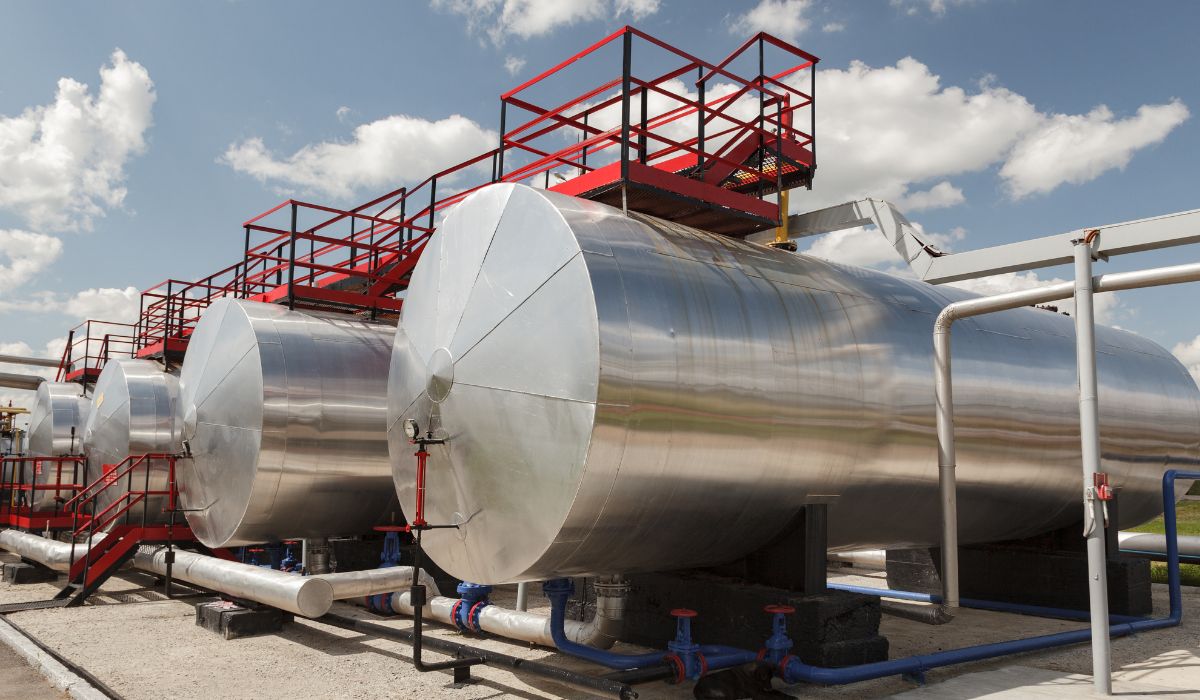
The top 10 types of steel tanks represent a crucial aspect in various industries, from agriculture to petroleum.
Their importance cannot be overstated. However, understanding their diversity and applications can often seem daunting.
Steel tanks come in numerous forms with unique purposes and advantages. This ranges from the commonly used horizontal and vertical configurations to more specialized ones like above-ground or underground installations.
Diving into the world of the Top 10 types of steel tanks helps us appreciate their role in safely storing liquids or gases for different uses. It’s not only about keeping things in storage; it is also important to guarantee effectiveness, safety, and sustainability within these industries.
Table Of Contents:
- Top 10 types of steel tanks in California and what they are used for
- 1. Understanding Stainless Steel Tanks
- Types of Steel Tanks
- Benefits of Using Stainless Steel Storage Tanks
- 2. Horizontal Steel Tanks
- 3. Vertical Steel Tanks: A Comprehensive Overview
- 4. Above-ground Steel Tanks: The Optimal Storage Solution
- 5. Exploring Underground Steel Tanks
- 6. Unveiling the Potential of Fixed Roof Steel Tanks
- 7. Understanding External Floating Roof Tanks
- 8. Floating Roof Design Options: More than Just Aesthetics
- 9. Internal Floating Roof Tanks: A Closer Look
- 10. Auxiliary Steel Tanks
- FAQs – Top 10 Types of Steel Tanks
- Conclusion
1. Understanding Stainless Steel Tanks
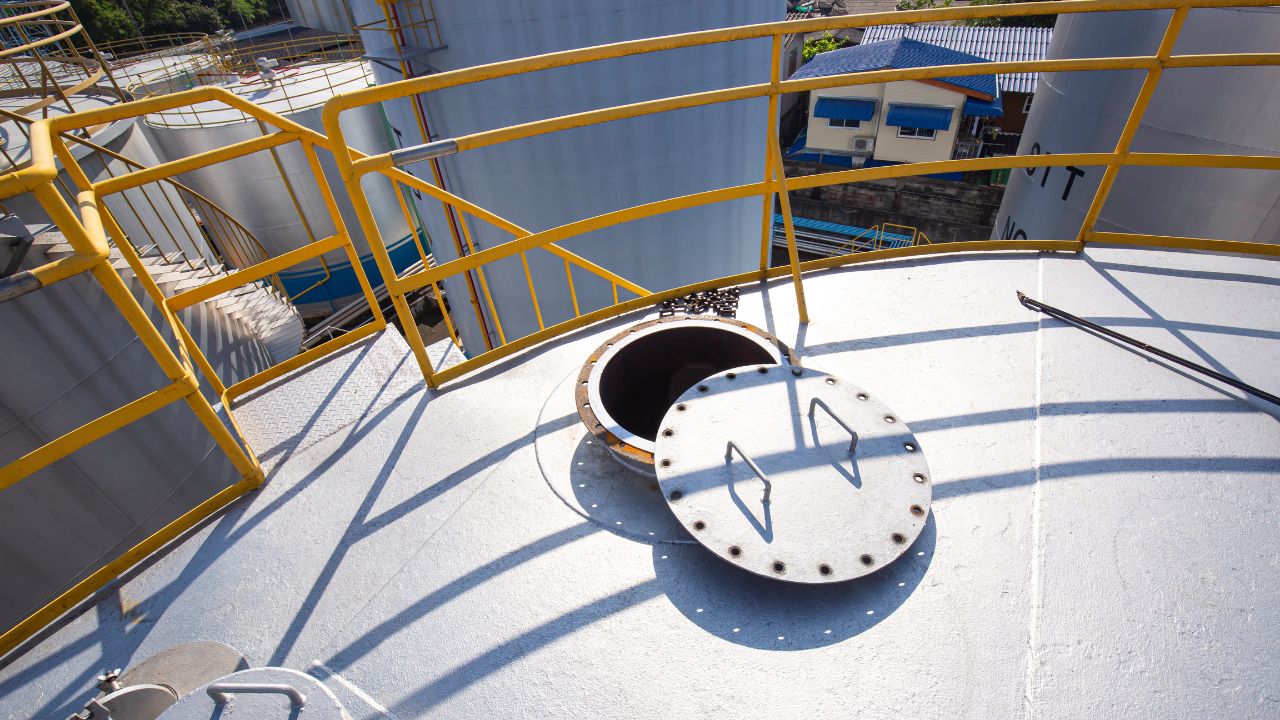
In the realm of industrial storage solutions, steel tanks emerge as a crucial component. But what exactly are these structures? They are robust containers constructed from stainless steel and designed to hold various substances.
This versatility extends beyond mere storage. These pressure vessels also play pivotal roles in many industrial processes where reactions need containment within controlled environments.
The Role of Steel Tanks in Industrial Operations
When it comes to ensuring efficient operations within an industry-leading tank fabrication professional’s arsenal, nothing quite matches up with the capabilities offered by steel tanks.
- Their cylindrical shape allows for optimal use of space, whether installed aboveground or underground.
- Various designs, such as horizontal tanks or vertical ones, cater specifically to different requirements.
- Made out of corrosion-resistant material ensures their longevity even under harsh conditions.
Types of Steel Tanks
In the industrial sector, steel tanks are indispensable assets for storage needs. With so many options for bolted steel tanks being available, it is important to consider the pros and cons of each type before making a decision.
Horizontal Steel Tanks
The first on our list is horizontal steel tanks. These liquid storage tanks and cylindrical structures have a flat bottom, making them ideal for storing large volumes of liquid or gas substances, such as oil, in the facilities of industry-leading tank fabrication professionals. Depending on your spatial requirements, they can be installed aboveground or underground.
Vertical Steel Tanks
Moving onto vertical steel tanks – these differ from their horizontal counterparts by having a conical base that sits directly atop the ground or platform surface without additional support to prevent corrosion effects over time. They are often used when space is at a premium and can efficiently accommodate smaller quantities of liquids or gases, both aboveground and underground.
Above-ground & Underground Steel Tanks
Last but not least, we have above-ground and underground steel tanks, which come in handy under different circumstances, respectively, while providing versatile options for larger-scale storage solutions catering to diverse applications like MMA flooring materials, etc. By answering all your steel storage tank questions and selecting the right one, it becomes easier than ever before.
Benefits of Using Stainless Steel Storage Tanks
The use of steel tanks in various industries has been growing rapidly due to their many advantages. High-grade stainless steel construction makes these storage solutions incredibly resilient, allowing them to withstand even the harshest environmental conditions.
This exceptional resilience not only extends the lifespan of these vessels but also reduces maintenance costs over time – an aspect that contributes significantly towards cost-effectiveness. In addition, they provide superior value as they require less frequent replacement compared to alternatives constructed with less durable materials.
Fire Safety: An Integral Benefit
A key advantage of steel tanks is fire safety. Steel doesn’t combust easily, unlike other materials that may contribute to or even accelerate fire spread. This enhances safety and fire protection measures within facilities where flammable liquids or gases are stored.
Straightforward Installation & Maintenance Process
The installation process for these structures is relatively simple thanks to industry-leading tank fabrication professionals who adhere strictly to pressure vessel code regulations while ensuring proper setup. Moreover, the ease at which repairs can be conducted on such containers further underscores why businesses should consider opting for this solution when considering long-term storage needs.
2. Horizontal Steel Tanks
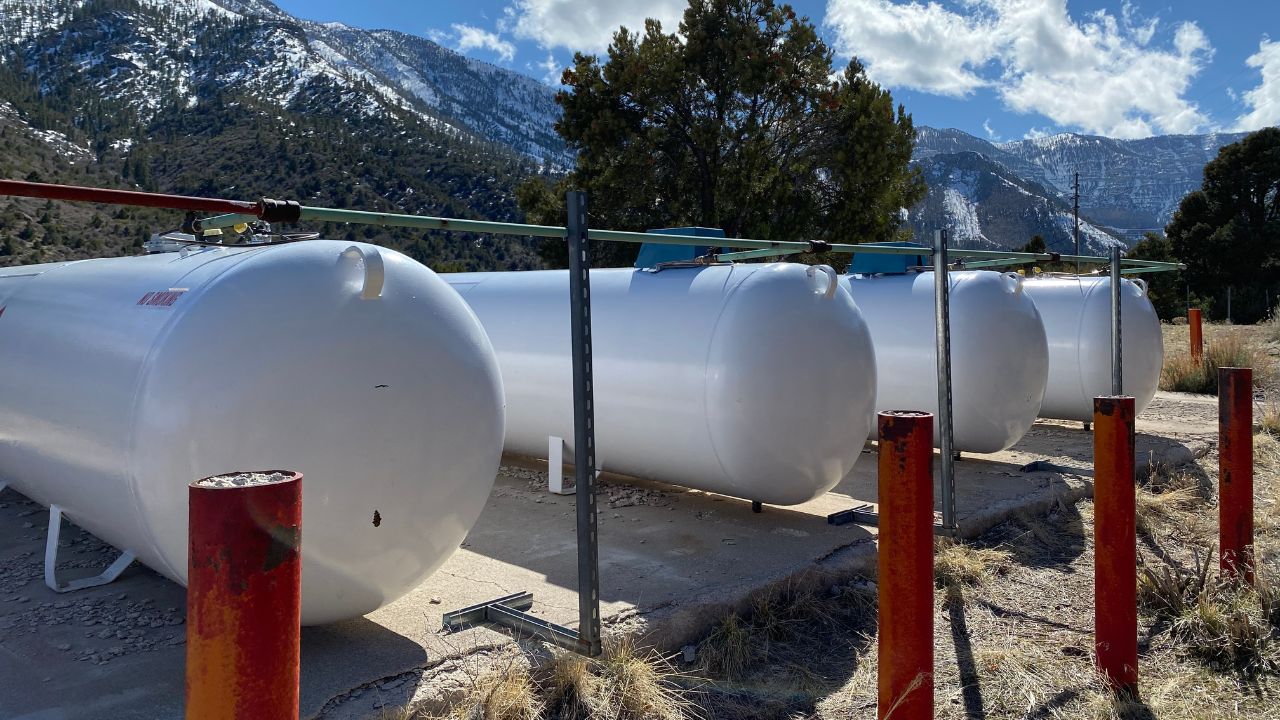
In commercial construction services, horizontal steel tanks are a popular choice. Their design and functionality make them ideal for storing large quantities of liquid or gas.
The cylindrical shape and flat bottom allow these storage tanks to be placed directly on ground surfaces or platforms. This simplicity in installation is one reason why they are highly favored.
Aboveground & Underground Installations
The versatility extends beyond just placement; horizontal steel tanks can be installed aboveground and underground without compromising integrity.
Made from stainless steel, these storage vessels exhibit high durability while preventing corrosion – two key factors to consider for long-term usage within industrial coatings and epoxy flooring sectors where regulated pressure vessel design is paramount.
Tailored Solutions: Customized Horizontal Steel Tanks
Beyond standard specifications, there is room for customization based on specific requirements such as size constraints or maximum allowable operating pressure considerations. The increased flexibility is offered by customized solutions ensures that various application needs across different industries are efficiently met.
3. Vertical Steel Tanks: A Comprehensive Overview
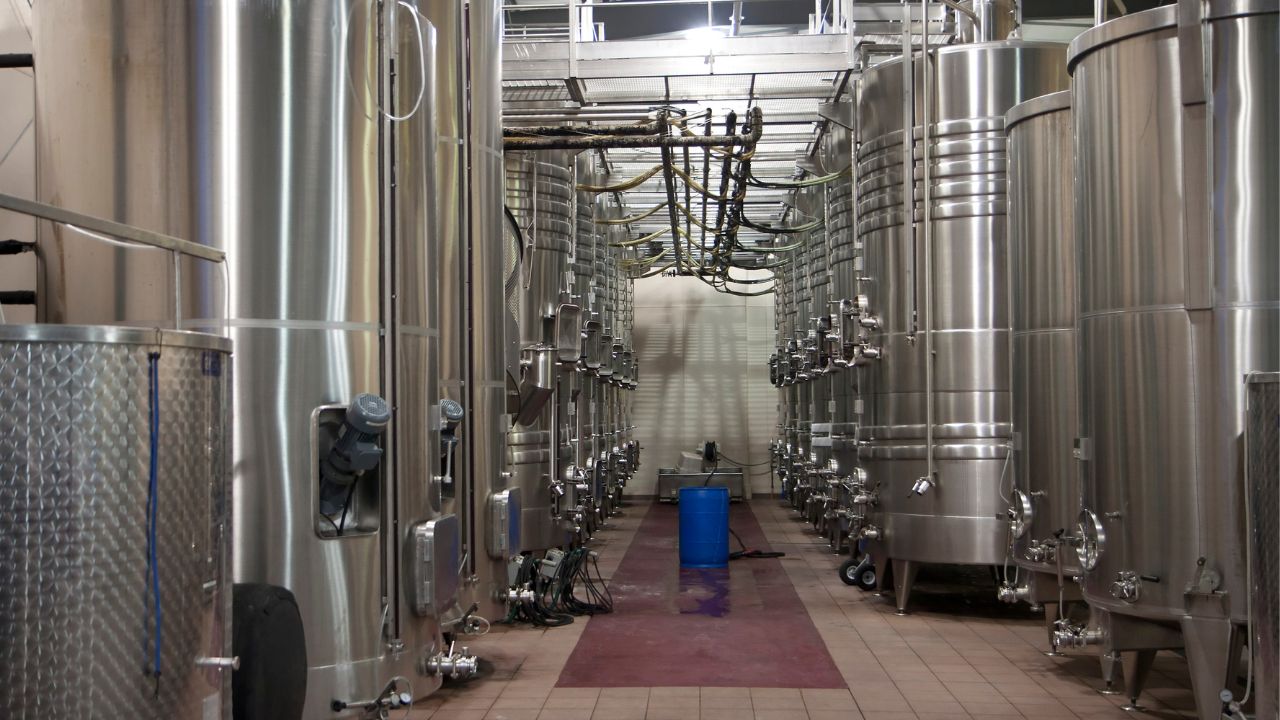
The world of storage solutions is diverse and vast, with vertical steel tanks as a notable option. These cylindrical structures, equipped with conical bottoms, are designed to rest directly on the ground or platforms.
This makes them an ideal choice in scenarios where space is premium.
Installation Flexibility: Aboveground and Underground Options
In line with other stainless steel tank types, such as fixed roof tanks and floating roof tanks (both internal floating roof tank options and external), vertical ones offer installation versatility. They can be installed aboveground and underground based on site conditions and storage needs – effectively catering to every commercial client’s specific requirements.
Achieving Customized Storage Solutions
Beyond just standard dimensions, these specialized pressure vessels provide customization possibilities too. Depending upon application specifics like maximum allowable operating pressure levels or regulated vessel design parameters under ASME boiler codes, custom-sized vertical steel oil storage containers can also be fabricated by industry-leading professionals, thus ensuring optimal efficiency in meeting each unique demand scenario.
This high level of adaptability, along with inherent features like corrosion resistance, make Vertical Stainless Steel Tanks an attractive proposition within California’s industrial coatings sector.
4. Above-ground Steel Tanks: The Optimal Storage Solution
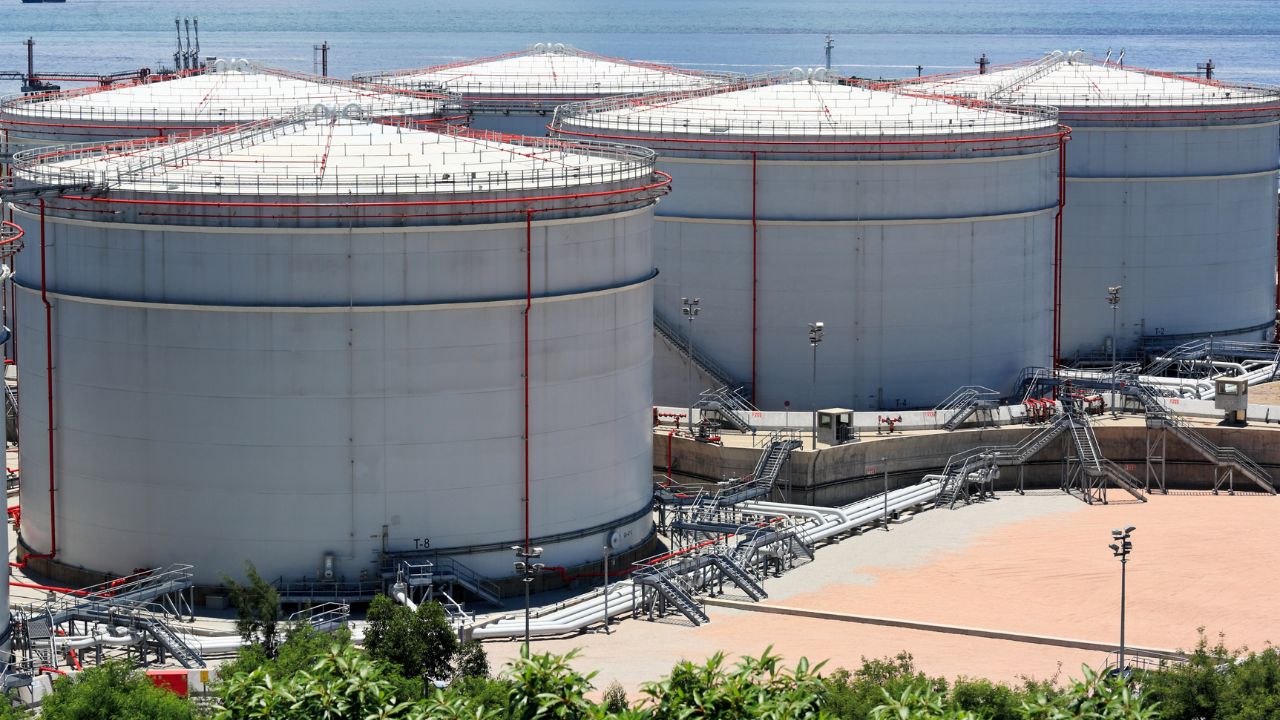
Seeking an effective storage solution for your commercial needs? Above-ground steel tanks might be the answer. These robust containers are designed to rest directly on a platform or the ground, negating any requirement for additional support structures.
Using stainless steel in their construction boosts durability and offers impressive resistance against corrosion – a crucial factor when storing chemicals or other corrosive substances.
Configurations Tailored To Your Needs
Above-ground steel tanks come in both horizontal and vertical configurations. Horizontal variants typically cater to large volume requirements, making them ideal for industrial applications demanding substantial storage capacity.
In contrast, if space is at a premium, vertical above-ground steel tanks could be more suitable due to their smaller footprints than their horizontal counterparts. This versatility ensures that whatever your specific need may be, an aboveground tank configuration can likely meet it effectively.
Maintaining Quality Standards With Industry-Leading Tank Fabrication Professionals
Quality control plays a significant role in manufacturing, ensuring these tanks stand up to industry standards while also meeting ASME Boiler & Pressure Vessel Code regulations, which govern pressure vessel design, including maximum allowable operating pressure. Learn more about the ASME BPV code here.
5. Exploring Underground Steel Tanks

Storing large quantities of liquid or gas often requires underground steel tanks. These structures are engineered for subterranean placement, with only their upper section visible above ground.
In addition to providing a safer alternative by reducing fire or explosion risks associated with concrete tanks, with above-ground options, these specialized tanks can be customized according to specific application requirements – horizontal and vertical configurations are available.
Selecting Your Underground Steel Tank: Key Considerations
- Analyzing your capacity needs is crucial when choosing between horizontal or vertical configurations (stainless steel).
- Tank shell construction plays a significant role in durability – stainless steel offers superior resistance against corrosion.
- Avoid older tanks; newer models come equipped with modern features like internal floating roof designs that regulate pressure vessel design better than external floating roofs.
Frequently Asked Storage Tank Questions Answered:
- “What is the maximum allowable operating pressure?” The answer depends on various factors, including the material used for construction, size, etc. Still, it’s always best practice to adhere strictly to ASME Boiler & Pressure Vessel Code regulations when designing any pressure vessel, including storage tanks.
- “How does one maintain the optimal liquid level within the tank?” Regular monitoring coupled with appropriate usage practices will ensure proper maintenance over time.
6. Unveiling the Potential of Fixed Roof Steel Tanks
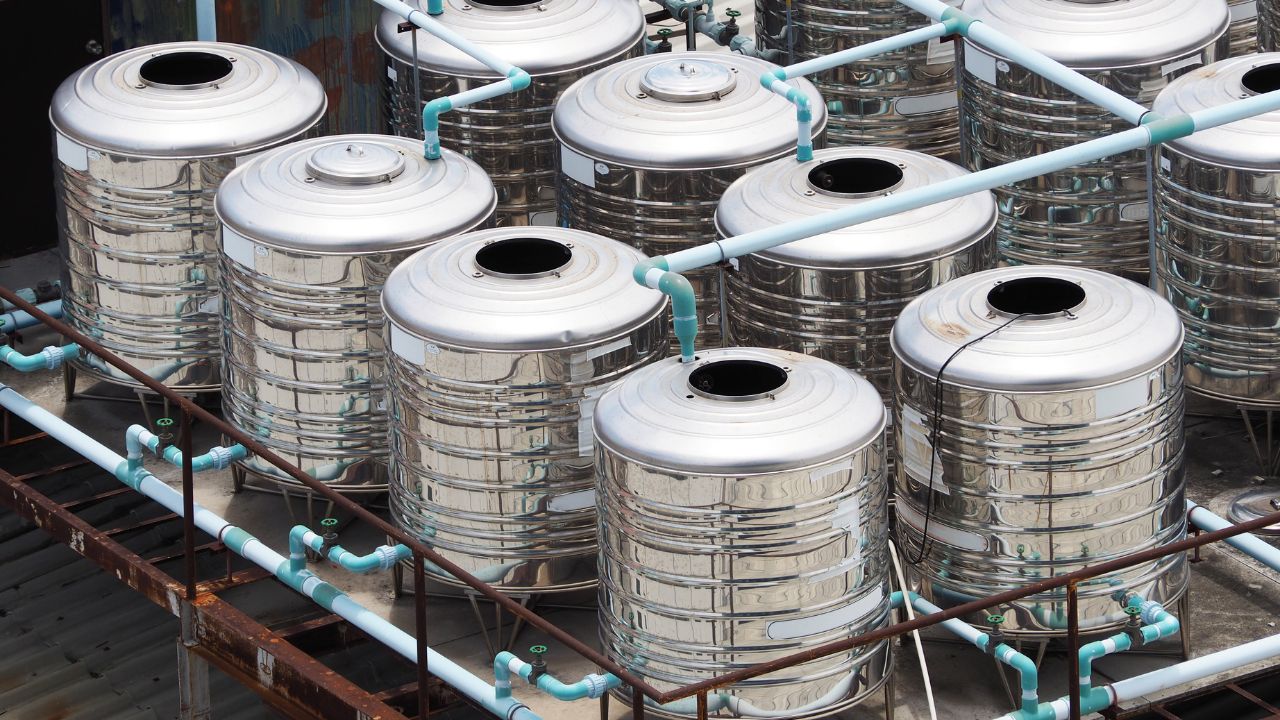
The commercial sector frequently turns to fixed-roof steel tanks for liquid storage solutions. These tanks, characterized by their permanent cone-shaped or dome-shaped roofs, are an equipment staple in many industries.
This design makes them efficient and offers benefits like corrosion resistance due to robust construction and adherence to industry-leading fabrication processes such as ASME Boiler and Pressure Vessel Code regulations on pressure vessel design.
Maintenance Aspects of Fixed Roof Steel Tanks
Maintaining these types is less demanding compared with other kinds, like floating roof tanks. However, they might need more frequent professional inspections if tanks are used for corrosive substances storage.
- Stainless steel materials enhance durability while ensuring maximum allowable operating pressure within each tank structure.
- A well-designed internal floating mechanism can help regulate stored substance levels effectively without compromising structural integrity or safety standards.
7. Understanding External Floating Roof Tanks
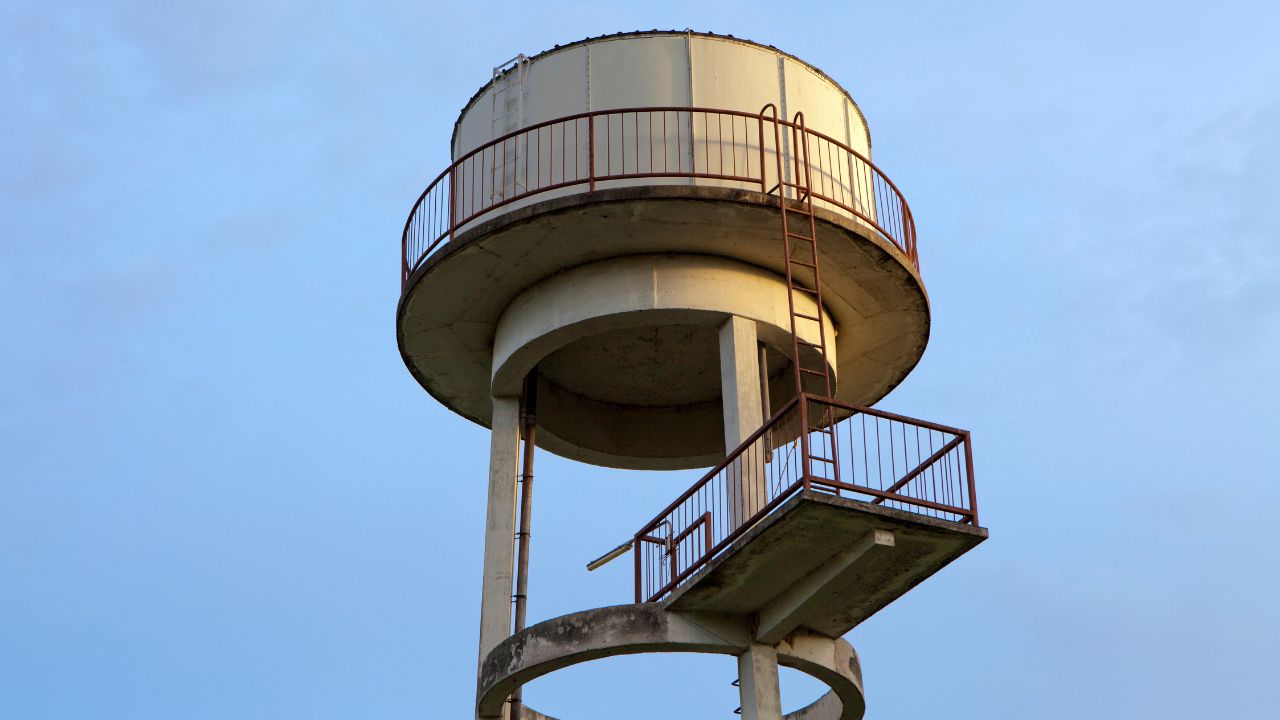
These welded steel tanks are prevalent in industries like oil and gas due to their unique design, where the roof floats on top of stored liquid.
This tanking system is known for its effectiveness in curbing evaporation, thus leading to cost-efficiency in the long run.
Versatility Meets Maintenance Needs
With versatility at its core, these tanks can be customized according to project size or operational requirements. However, they demand regular maintenance checks, especially around edge seals that need constant monitoring for potential leaks or damages.
8. Floating Roof Design Options: More than Just Aesthetics
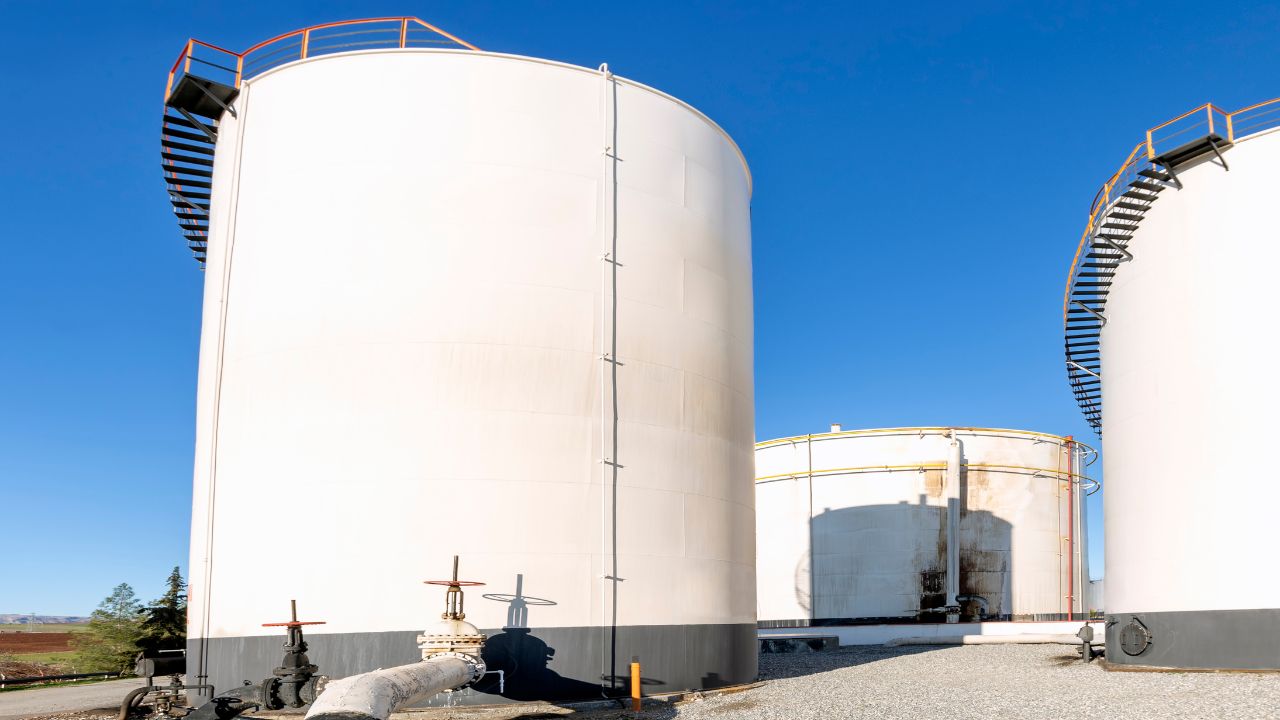
Regarding external floating roof tanks, the design options go beyond just aesthetics. These tanks are designed to provide additional benefits such as:
- Reduced emissions: The floating roof helps to minimize the release of volatile organic compounds (VOCs) into the atmosphere, making it an environmentally friendly option.
- Protection against weather elements: The roof acts as a shield, protecting the stored liquid from rain, snow, and other weather conditions.
- Prevention of contamination: The floating roof prevents debris, dust, and other contaminants from entering the tank, ensuring the quality and purity of the stored liquid.
9. Internal Floating Roof Tanks: A Closer Look
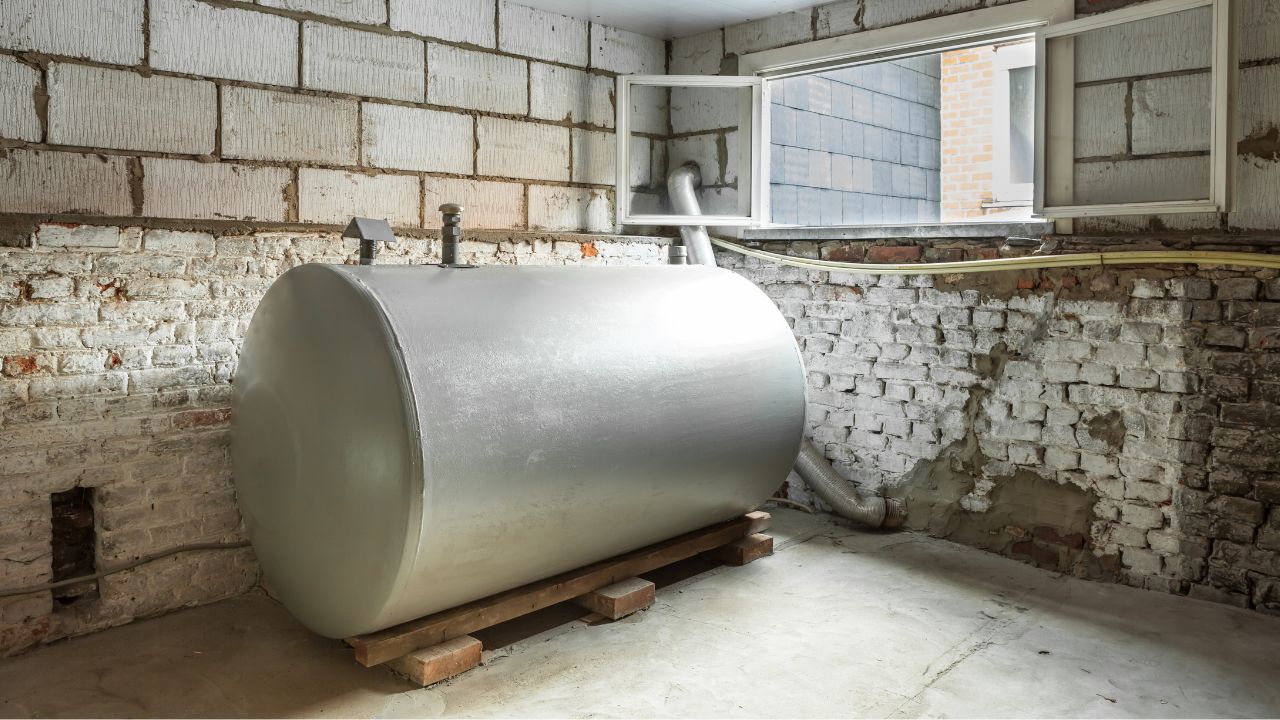
As the name suggests, internal floating roof tanks have a floating roof inside the tank. These tanks are commonly used in chemical industries where the stored liquid needs to be protected from external factors such as sunlight and air.
The internal floating roof is designed to move up and down with the liquid level, reducing the vapor space and minimizing evaporation loss. This design feature makes it an ideal choice for storing volatile liquids.
10. Auxiliary Steel Tanks
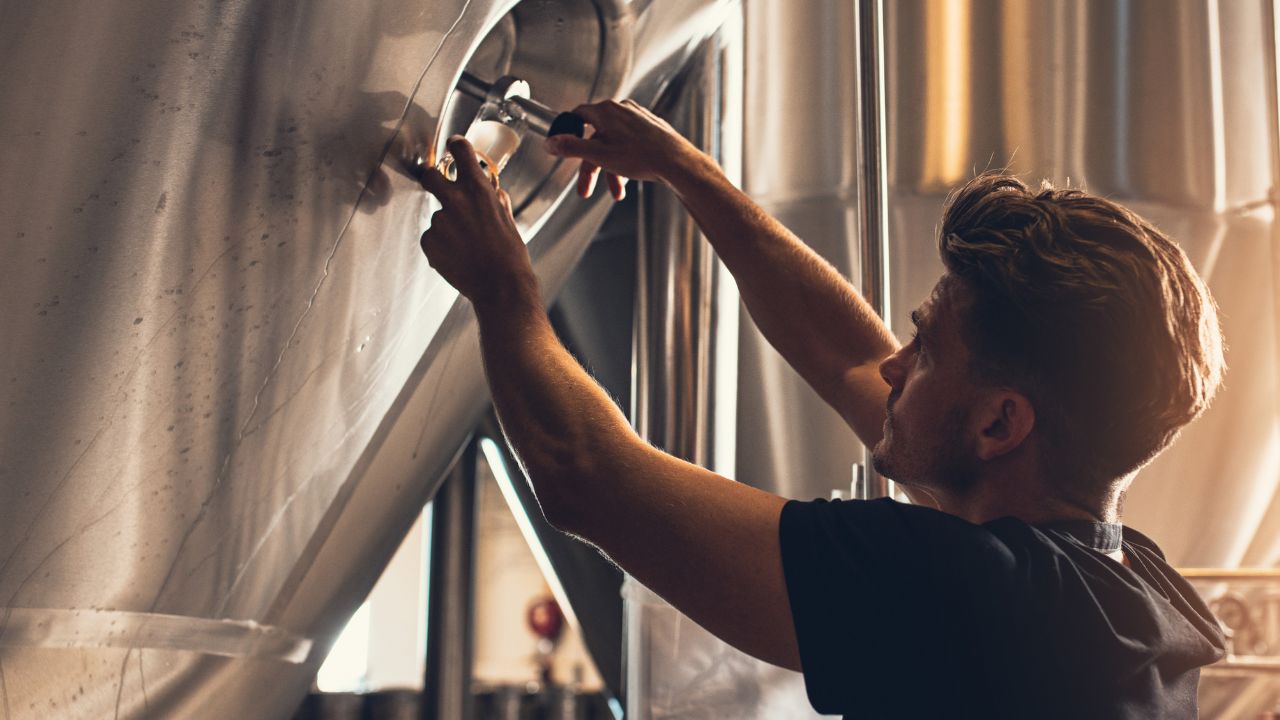
Auxiliary steel tanks, specialized storage units, and ground storage tanks are designed to supplement the main tank in various systems.
Their functionality is diverse – from providing additional storage space to backup during emergencies. A common application is fuel systems, where these auxiliary fuel storage tanks store extra fuel and refill the primary tank automatically when required, ensuring uninterrupted operation.
In addition to their practical uses, auxiliary stainless steel pressure tanks offer numerous benefits, such as durability and resistance against corrosion. They also facilitate easy maintenance by industry-leading tank fabrication professionals who regulate pressure vessel design according to ASME boiler and pressure vessel code standards for maximum allowable operating pressure.
The size and configuration of an auxiliary tank can be customized based on specific requirements, making them versatile across different industries with varying applications.
FAQs – Top 10 Types of Steel Tanks
What is the best steel for tanks?
The best steel for tanks often depends on their intended use, but carbon steel and stainless steel are generally preferred due to their durability and corrosion resistance.
What kind of steel is used in tanks?
Tanks typically utilize carbon or stainless steel varieties. These materials offer excellent strength, durability, and resistance against environmental factors.
What is the strongest metal used for tanks?
The strongest metals commonly employed in tank construction include high-grade alloys like Hardox or Strenx steels, which provide superior strength and resilience.
What are the different types of tanks in civil engineering?
In civil engineering, various tank types exist, including water storage tanks, septic systems, and oil storage units, each designed to meet specific needs.
Conclusion
In California’s harsh climate conditions, they prove their worth with durability, corrosion resistance, and fire resistance, among other benefits.
So whether you’re in the agriculture or petroleum industry, a steel tank is designed for your specific needs!
Contact Extreme Industrial Coatings today for our steel tank services across California.


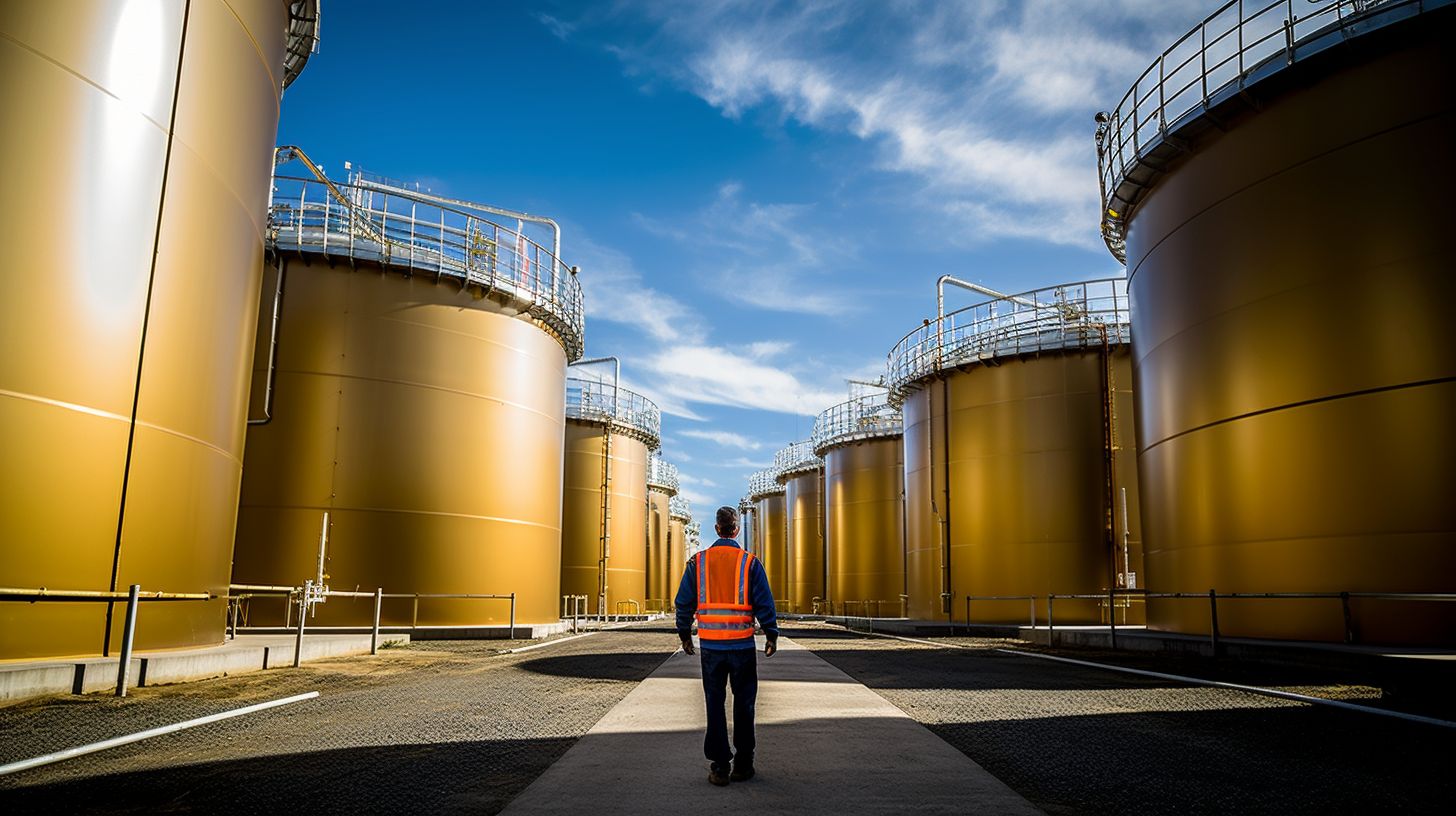
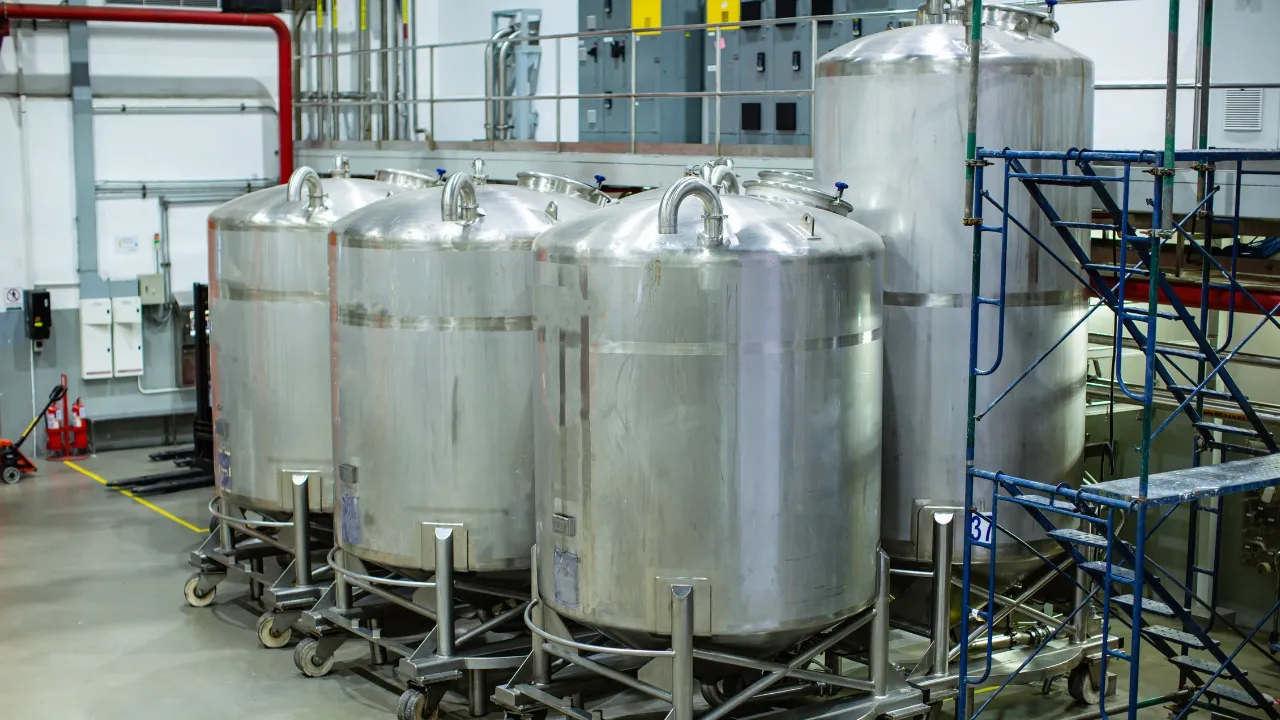
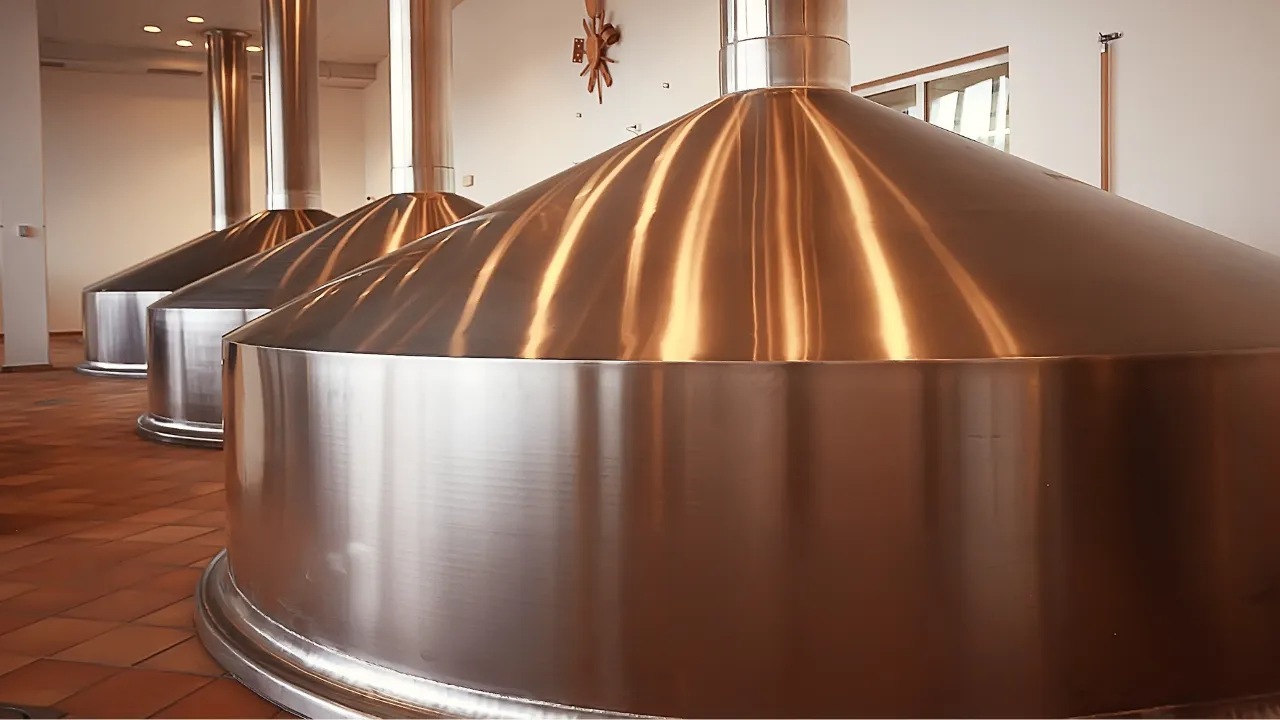
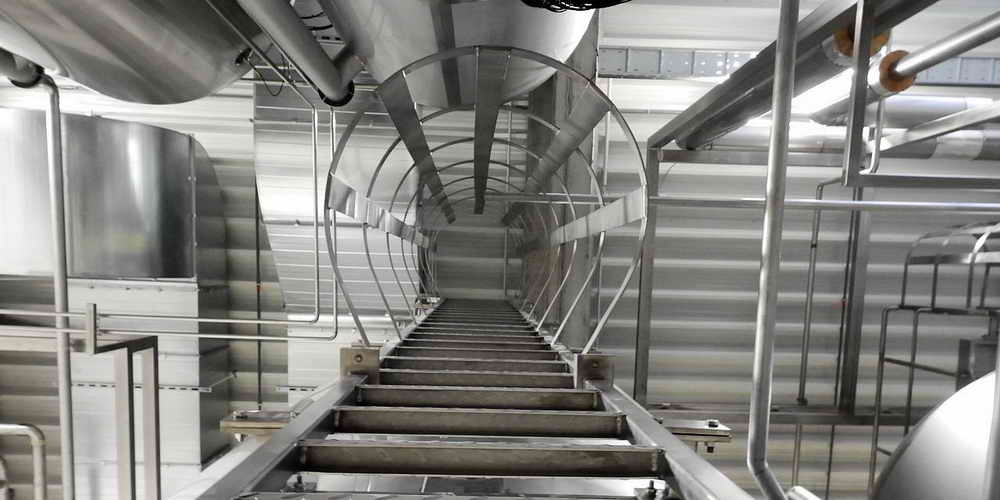
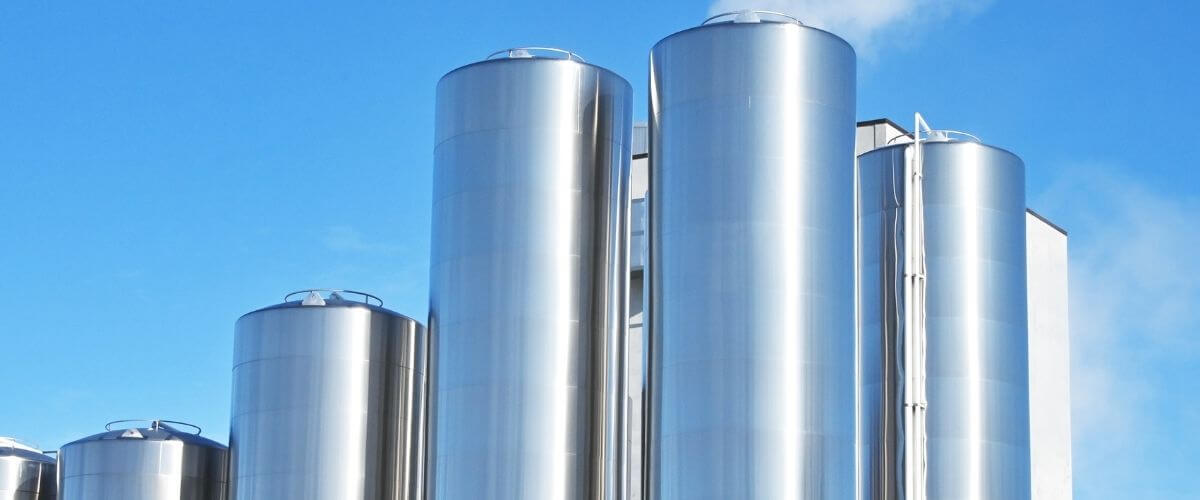
Leave A Comment